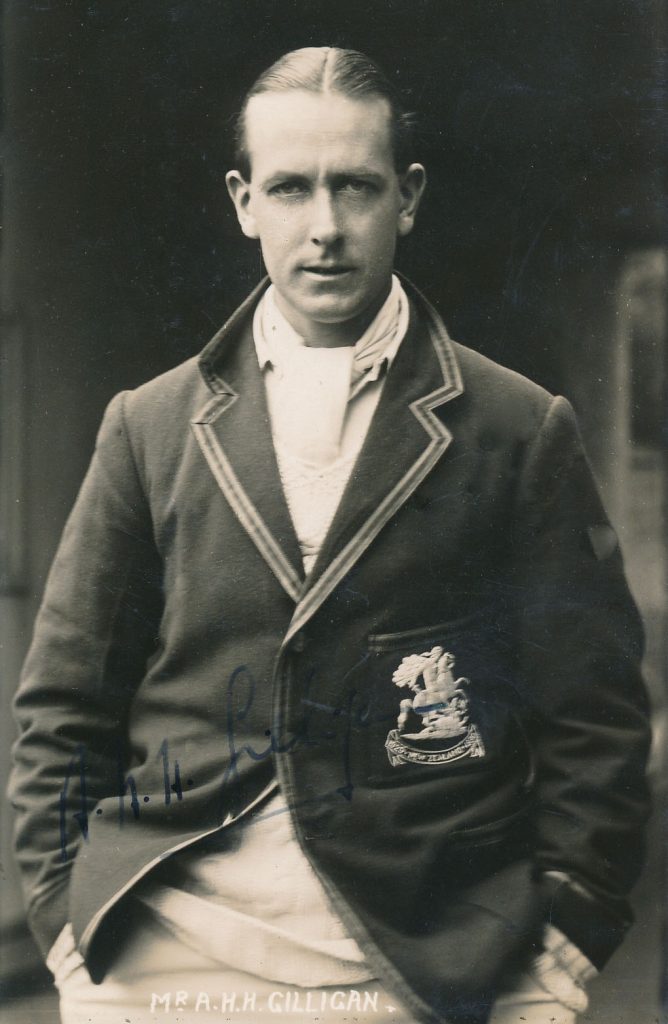One of the Sussex greats
Arthur Edward Robert Gilligan was one of the Sussex greats. He captained Sussex for eight years between 1922 and 1929, was an excellent fast bowler and a quick scorer of runs lower down the order and a very good fielder, particularly at mid-off . With Maurice Tate the pair were the most lethal fast bowling partnership in England for a time in the 1920s and together they helped to restore Sussex’s fortunes. Gilligan captained the England team nine times in 1924 and 1925 and also led a team to India in 1926/27. As captain he got the best out of his players through leading by example and even at the end of the 1920s when his powers as a bowler were in decline he still managed to pull Sussex up the Championship table.
Gilligan was born in Denmark Hill, South London, on 23 December 1894. He was one of three brothers born to Frank and Alice Gilligan, and brothers Harold and Frank also played cricket to a high level with Harold playing for Sussex and captaining the side between in 1930. Gilligan attended Dulwich College from 1906 where he excelled at both football and cricket. He played in the college’s cricket team between 1911 and 1914 topping the college’s batting and bowling averages in 1914. In 1913 and 1914 he played for Surrey second X1 before entering Cambridge University (Pembroke College) for the autumn 1914 term. His life at Cambridge though was cut short by World War One. Gilligan joined the Lancashire Fusiliers in 1915 and once his training was complete was sent to France with the 11th Battalion (Bn), Lancashire Fusiliers. Over the course of the war he rose to the rank of Major, having responsibility for a company of men, around 120 officers and men. The 11th Bn remained in France and Belgium throughout the war and was involved in some of the hardest fought battles.
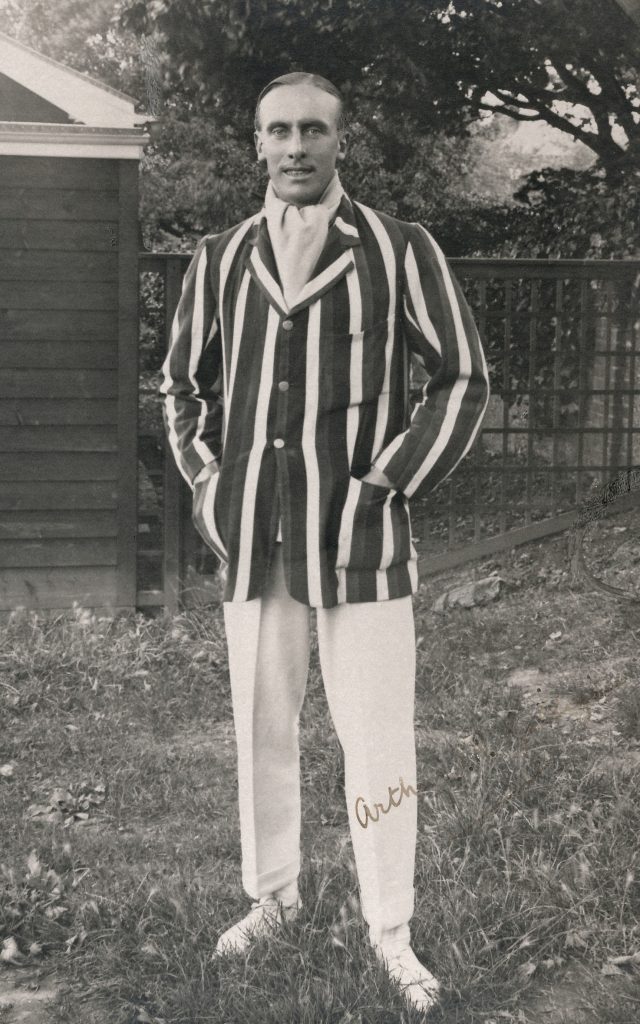
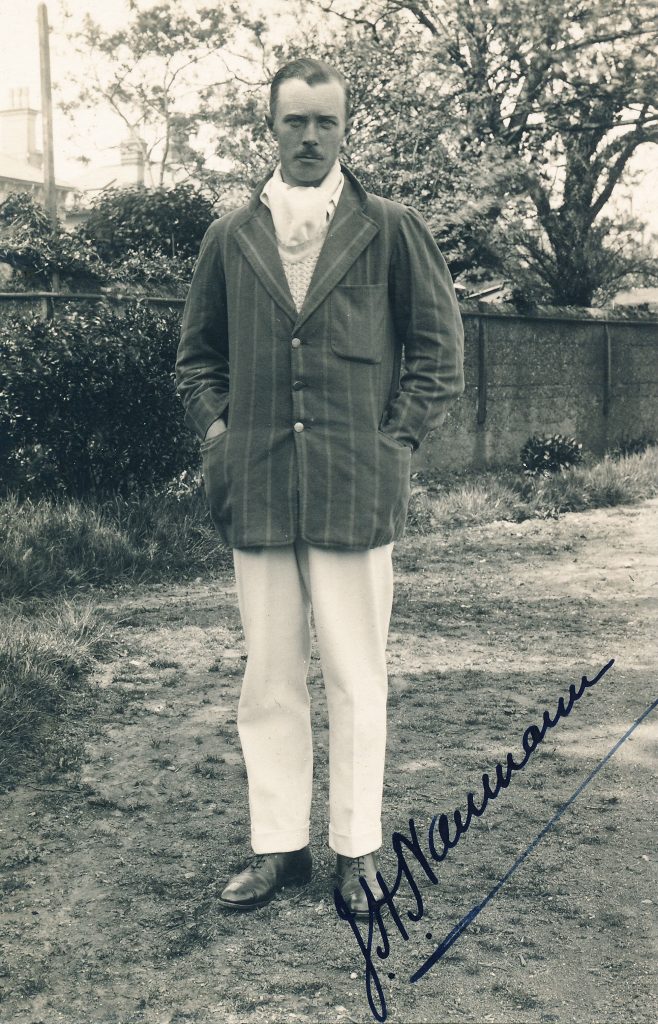
Service at the Somme and at Ypres
The battalion arrived in France in September 1915 and remained in the vicinity of Nieppe until their first action, in May 1916, the defence of Vimy Ridge. The battalion was then moved to the Somme where it was sent into action on the third day of the Somme offensive where they lost a lot of men. The Battalion was also involved in the Battles of Pozieres, Ancre Heights and Bazentin. In 1917 the battalion was moved to the Ypres salient where it was used in the attack on the Messines Ridge, just prior to the Third Battle of Ypres. During the Third Battle of Ypres, the battalion was in action during the Battle of Pilkem. In 1918, the battalion was back in action in the Somme sector being used in the Battle of Lys. The battalion was disbanded in August 1918.
Following demobilisation in 1919, Gilligan returned to Cambridge and performed well for the university side, both with the ball and the bat. Against Sussex he scored 101 at number 11, sharing in a last wicket partnership of 177 in 65 minutes with John Naumann. A few days later he was awarded his Blue for cricket. In this match, in which he took six for 52, two sets of brothers played on opposite sides: Arthur and Harold Gilligan and the two Naumann brothers. Later in the season Gilligan played three first class matches for the county of his birth, Surrey, but made little impression. At the end of the season, Gilligan decided to join Sussex, a county for whom he had always had a special affinity – his brother, Harold was already playing for the Sussex side.
‘A fielder brilliant in the extreme‘
In 1920 Gilligan continued to play for Cambridge but at the end of the term began his long career with Sussex. Gilligan made a slow start to his Sussex career being quite expensive as a bowler in 1920, but the following year began to make an impression taking 90 wickets. Perhaps the greatest improvement was in his fielding which was described by Wisden as ‘brilliant in the extreme’. In 1922 Gilligan was made captain of the side and he made an instant impression. The fielding was much improved, due to the captain leading by example, and the side won five out of the first six matches, but as soon as the weather changed in May, the side began to lose regularly. At the end of the season, Gilligan was selected for the MCC tour of South Africa and played in two Test matches. In his second match (the last Test match) he took six wickets and made a crucial 39 not out in the second innings, enabling England to win the match and the series 2:1.
The 1923 season (after injury) was a much better one for Sussex with Gilligan’s energy and leadership motivating the team. There were 15 Championship wins and just eight defeats. In 1924, Gilligan was chosen to captain England in the first Test match against South Africa and he and his county compatriot, Maurice Tate, demolished the South African batting, bowling them out for just 30 on a flat wicket, with his own analysis being 6 for 7. The Sussex pair were the most lethal opening partnership in the world at this time, and just before the Test, had bowled out Surrey for 53 and Middlesex for 41. Gilligan was then cruelly injured in an accident which changed him as a cricketer. He was never to be the fast bowler he had been and although he continued to play for Sussex and indeed take a MCC side to India, he was a shadow of his old self. The accident occurred at the Oval when Gilligan was playing for the Gentlemen v Players. A good length ball rose sharply and hit Gilligan over the heart. Maurice Tate was the first to get to get to him and in Tate’s words, ’’I….undid his shirt, trying to revive him. I saw a terrible bruise over the heart and there is no doubt that he should have retired from the game. Instead of that, with his immense pluck, he went in to bat in the second innings’’. Going in to bat at number 10, he scored 112. Tate believed that it was the effort of making this century that made Gilligan less effective than he might have been in subsequent years.
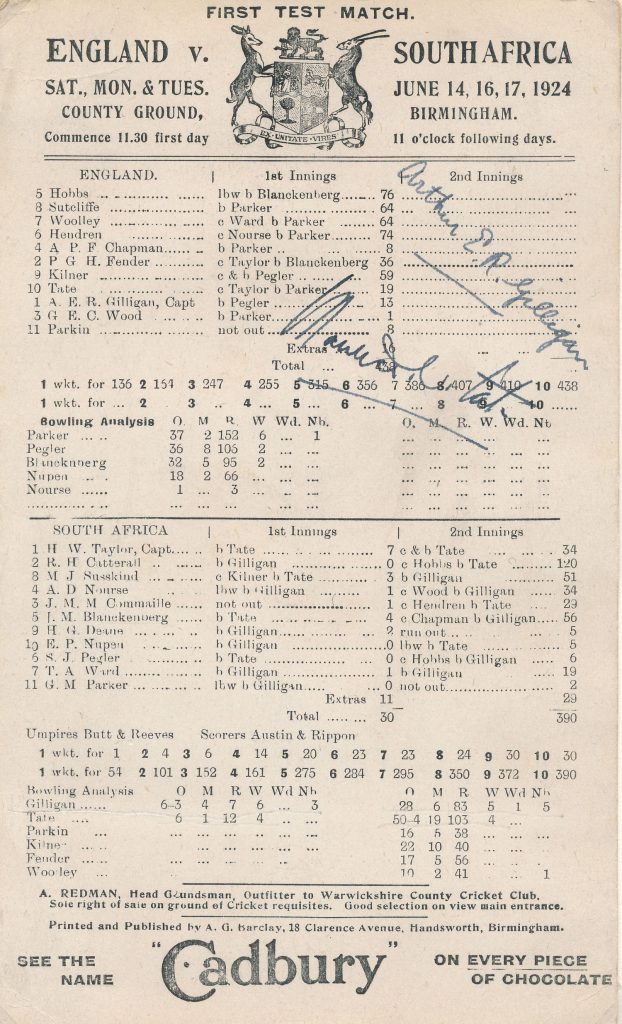
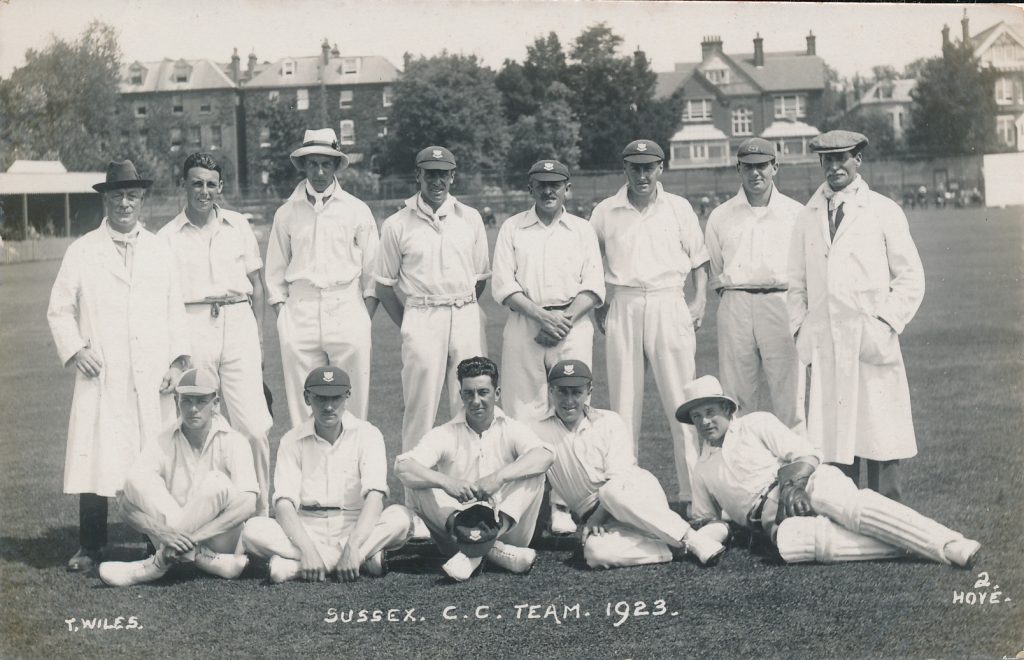
Captain of the touring side to Australia
Despite the injury Gilligan was chosen to take MCC to Australia and India in the winter of 1924/25. The series was lost 4:1 but in defeating Australia in the fourth Test inflicted the first defeat on Australia in the Post-War period. Gilligan’s figures were not exceptional but he, through his inspiring leadership, got the best out the side and regained the respect of the Australian public. The following year Gilligan played just a few games for his county because of his injury.
In 1926 Gilligan was not chosen to play for England but he did become a selector. For Sussex, Gilligan had one of his best seasons for the team scoring 1,000 runs and making four centuries in helping Sussex move up to tenth place in the Championship.
President of Sussex and MCC
That winter Gilligan was chosen to captain the side that went to India. It was not an official series but the first MCC side to tour the sub-continent. It was a success and much of this was the result of Gilligan’s leadership. Like many other touring sides to India , he took the team to Jamnagar to visit Ranji and renew his friendship with his former county colleague.
His form continued over the next few seasons although he did not always bowl. In 1928 he scored 942 runs and took 76 wickets. His final season as captain was in 1929 when he played only twelve times and in his absence his brother Harold captained the team. Arthur was frequently injured, did not score a fifty and took only four wickets. Gilligan continued to play the occasional match retiring fully in 1932.
After he retired from cricket Gilligan moved into journalism and broadcasting, forming a popular partnership with Victor Richardson when reporting on the 1932/33 Ashes series and subsequent series, and later becoming a member of the BBC team reporting on Tests between 1947 and 1954. He wrote about cricket, publishing Sussex Cricket, The Urn Returns about the 1954/55 series won by England and other books. He later moved into cricket administration, becoming President of both Sussex and MCC. In 1971 a stand at Hove was named after Gilligan although as part of the 2010 development it was demolished. Gilligan died at Mare Hill, Pulborough on 5 September 1976
His record for Sussex
Batting Record
Matches played: 227, Runs 6,712 at an average of 20.27
Bowling Record
Overs bowled: 4,863 Wickets: 637 at an average of 21.01
Career Best performances
Batting: 144 v Worcestershire, 1928
Bowling: 8-25 v Middlesex, 1924
